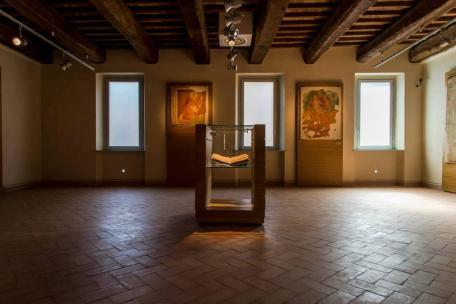HISTORY
An ancient Umbrian-Etruscan settlement, Bettona was conquered by the Romans, who made it a municipium. In the 12th century, after the barbarian invasions, it became an independent commune, but in 1352, after a lengthy siege, it was conquered and destroyed by Perugia. In 1367 the Church ordered Cardinal Albornoz to rebuild the town, which soon after became part of the Papal States. Immediately after it returned under the rule of Perugia and the Baglioni lords. In 1648 it was incorporated permanently into the Papal States, remaining there until 1860.
ART, CULTURE, ENVIRONMENT
The built-up area is entirely surrounded by the medieval walls, with parts of the older Etruscan walls remaining, made from quadrangular blocks of sandstone. Inside the historic center are the 13th-century Church of Santa Maria Maggiore, with paintings by Perugino, Nicolò Alunno and a fresco by Gerardo Dottori, and the Palazzo del Podestà (1371), today the home of the Municipal Picture Gallery, with works by Perugino, Dono Doni, Tiberio d'Assisi, Della Robbia terracottas and an archeological section.
Nearby, in the hamlet of Colle, there is an Etruscan hypogeum (2nd century BC): one large rectangular chamber tomb with a number of cinerary urns. Going toward the hamlet of Passaggio di Bettona, one comes across the handsome Torre del Molinaccio (13th century), built as a lookout tower during the wars against Perugia. Descending the hill to the plain, one sees Villa del Boccaglione, a grand 18th-century country estate built by Piermarini. Worthy of a visit in Passaggio di Bettona is the Abbey of San Crispolto al Piano complex, built prior to 1000 AD over a Roman building.















